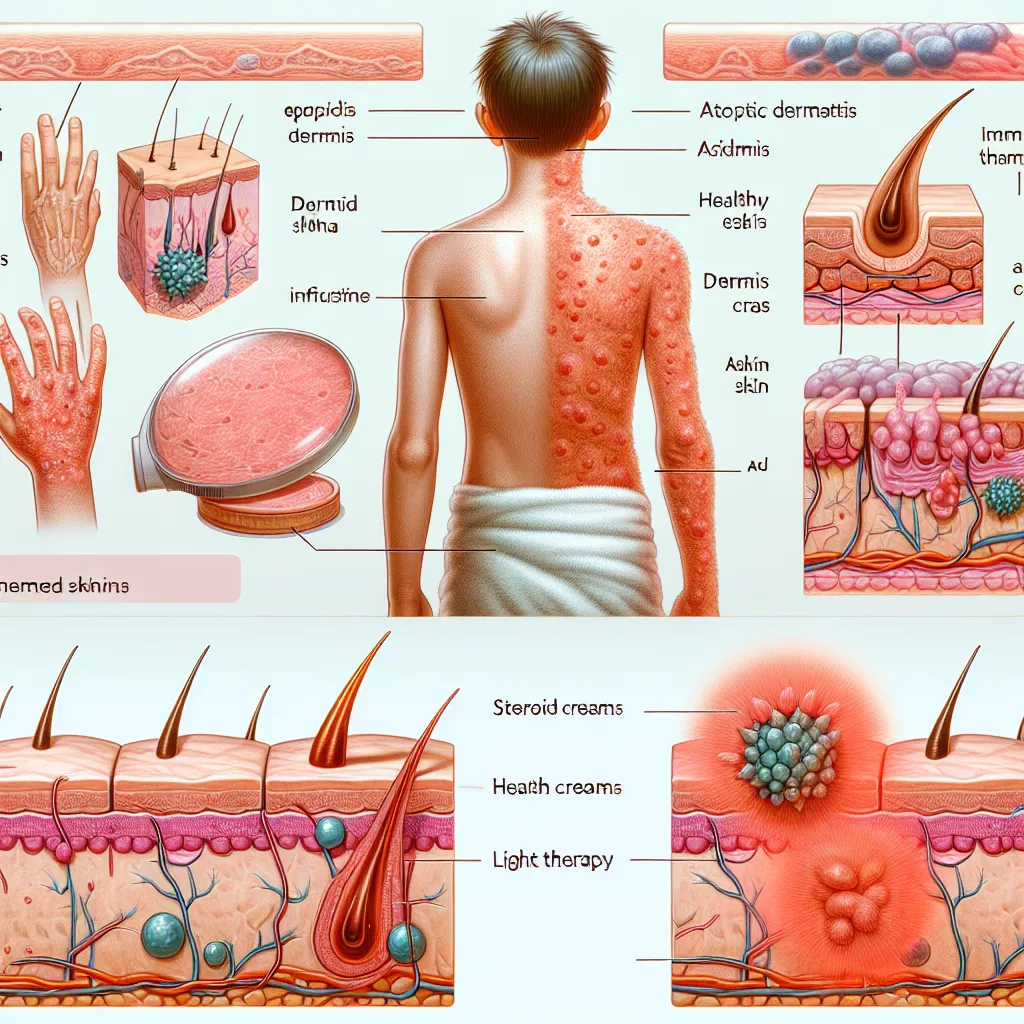Understanding Atopic Dermatitis: A Visual Guide
Understanding Atopic Dermatitis: A Visual Guide
Atopic dermatitis, also known as eczema, is a common skin condition that affects millions of people worldwide. It is characterized by itchy, red, and inflamed skin patches that can be both uncomfortable and aesthetically troubling. To better understand this condition, this article will provide a comprehensive visual guide to atopic dermatitis, including pictures to help you recognize its symptoms and manifestations.
What is Atopic Dermatitis?
Atopic dermatitis is a chronic skin condition that causes inflammation and irritation. It is often associated with other allergic conditions, such as asthma and hay fever. Atopic dermatitis typically appears during early childhood but can persist into adulthood. It affects both males and females, and its prevalence has been increasing over the years.
Symptoms of Atopic Dermatitis
The symptoms of atopic dermatitis may vary from person to person, but common symptoms include:
- Itchy skin
- Red or brownish-gray patches
- Dry and scaly skin
- Small, raised bumps that may leak fluid when scratched
- Thickened, cracked, or crusty skin
- Sensitive and swollen skin
Triggers of Atopic Dermatitis
Several factors can trigger or worsen atopic dermatitis flare-ups. These triggers may include:
- Environmental allergens such as pollen, dust mites, or pet dander
- Irritants like soaps, detergents, and certain fabrics
- Hot or cold weather conditions
- Stress and emotional factors
- Foods such as dairy, eggs, soy, or wheat
- Hormonal changes
- Microbes like bacteria, viruses, and fungi
Pictures of Atopic Dermatitis
Visual references can be helpful in identifying atopic dermatitis. Below are some pictures that illustrate the different stages and manifestations of this condition:
Picture 1: Early-stage Atopic Dermatitis


In the early stages of atopic dermatitis, the skin appears red, dry, and itchy. It may also have small, raised bumps that can leak fluid when scratched. These areas of inflammation often occur on the cheeks, forehead, and scalp in infants, while older children and adults may experience them on the neck, wrists, and ankles.
Picture 2: Moderate-stage Atopic Dermatitis

In the moderate stage, the affected areas become more inflamed, and the skin may appear thicker and scaly. Scratching the itchy patches can lead to further redness and swelling. The skin may also become more sensitive and prone to infections.
Picture 3: Severe-stage Atopic Dermatitis

Severe atopic dermatitis is characterized by widespread inflammation and intense itching. The skin becomes extremely dry, thickened, and cracked. In severe cases, open sores may develop, increasing the risk of infections.
Treatment and Management
While there is no cure for atopic dermatitis, various treatment options can help manage its symptoms and reduce flare-ups. These may include:
- Topical corticosteroids to reduce inflammation and itching
- Moisturizers to keep the skin hydrated and prevent dryness
- Antihistamines to relieve itching and aid in sleep
- Immunosuppressants for severe cases
- Identifying and avoiding triggers
- Wearing soft, breathable clothing
- Using mild, fragrance-free soaps and detergents
- Keeping the skin clean and dry
When to Seek Medical Help
If you suspect that you or your child has atopic dermatitis, it is important to consult a healthcare professional for an accurate diagnosis and appropriate treatment. Additionally, you should seek medical help if:
- The symptoms worsen or do not improve with home care
- The affected skin becomes infected
- You experience significant discomfort or disruption to daily life
- Your child’s sleep is consistently disturbed due to itching
- You notice signs of an allergic reaction, such as difficulty breathing or swelling
Conclusion
Atopic dermatitis can be a challenging condition to manage, but with proper understanding and treatment, its impact on your daily life can be minimized. Recognizing the symptoms and identifying triggers are crucial steps toward effective management. If you suspect you or your loved one has atopic dermatitis, consult a healthcare professional for guidance and support.
